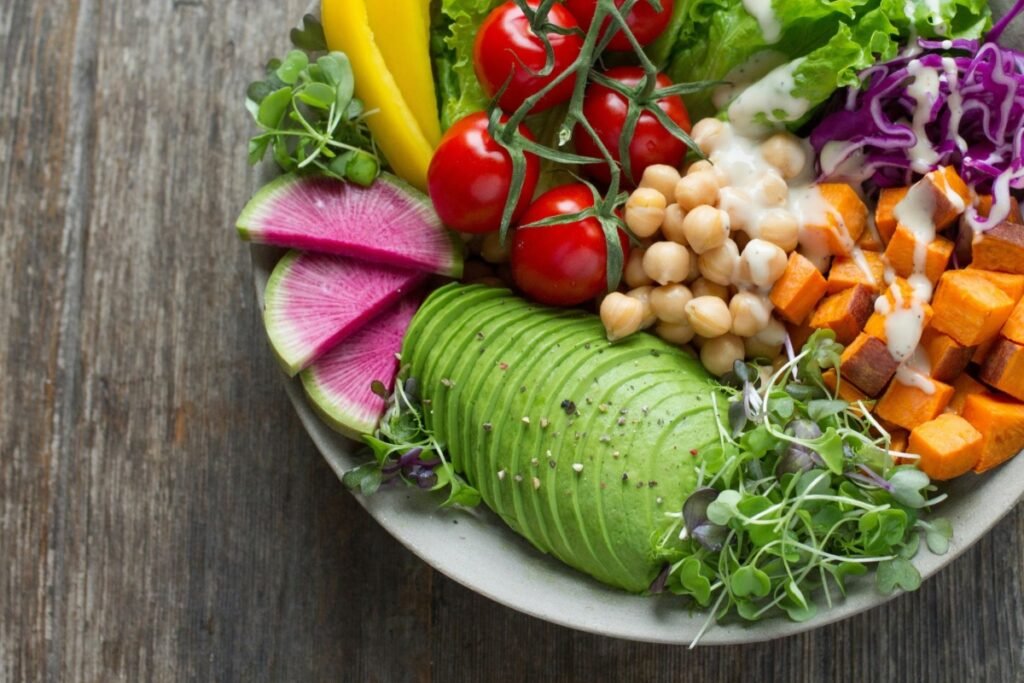Nourishing bowls, also known as Buddha bowls or power bowls, are a fantastic way to pack your meal with nutrients, flavors, and textures. They are not only Instagram-worthy but also incredibly easy to make, versatile, and customizable. Whether you’re focused on a plant-based diet, seeking more protein, or simply trying to eat healthier, a nourishing bowl can meet your needs. In this step-by-step guide, we’ll show you how to create a balanced, nutrient-dense bowl that will leave you feeling satisfied and energized.
Step 1: Choose Your Base
The base of your nourishing bowl is crucial because it provides the foundation for the rest of your ingredients. Your base should be hearty, fiber-rich, and ideally whole grain, but you can mix and match depending on your nutritional needs.
Options for the base:
- Whole Grains: Brown rice, quinoa, farro, or bulgur. These are high in fiber and provide long-lasting energy.
- Greens: Kale, spinach, arugula, or mixed greens. If you want a lighter option, go for leafy greens as your base.
- Starchy Veggies: Sweet potatoes, squash, or roasted carrots. These will add both comfort and nutrition.
Tip: For an extra nutrient boost, combine greens and grains, like a bed of spinach with a scoop of quinoa.
Step 2: Add Protein
Protein is a key component of any balanced meal, and a nourishing bowl is no different. If you’re a vegetarian or vegan, there are plenty of plant-based options.
Protein options:
- Chickpeas or Black Beans: These legumes are high in protein, fiber, and essential nutrients like iron.
- Tofu or Tempeh: Both are excellent sources of plant-based protein. Tofu is softer, while tempeh has a firmer texture and slightly nutty flavor.
- Edamame: Young soybeans are an easy-to-add protein source that brings both flavor and a pop of color to your bowl.
- Eggs: A simple soft- or hard-boiled egg adds protein and healthy fats.
Step 3: Include Healthy Fats
Healthy fats not only add creaminess and flavor but are essential for absorbing fat-soluble vitamins like A, D, E, and K. Don’t shy away from adding fats to your bowl—they can help you stay full longer.
Healthy fat options:
- Avocado: Rich in healthy fats and fiber, avocado adds a creamy texture to your bowl.
- Nuts and Seeds: Sprinkle some almonds, walnuts, sunflower seeds, or chia seeds for crunch and nutrition.
- Olive Oil or Tahini: A drizzle of extra virgin olive oil or a spoonful of tahini (sesame seed paste) can elevate your bowl to the next level.

Step 4: Add Colorful Veggies
One of the most exciting parts of building a nourishing bowl is the array of colorful vegetables you can add. Aim for a variety of colors, as different hues often signify different vitamins and minerals.
Options for veggies:
- Roasted Vegetables: Sweet potatoes, zucchini, beets, and carrots are great choices. Roasting brings out their natural sweetness.
- Raw Vegetables: Add crunch with cucumber, radishes, shredded carrots, or red cabbage.
- Fermented Veggies: Kimchi or sauerkraut not only add flavor but also provide gut-healthy probiotics.
Tip: The more colors, the better! A colorful bowl is visually appealing and ensures you’re getting a range of nutrients.
Step 5: Flavor with Sauces and Dressings
Sauces and dressings bring all the elements of your nourishing bowl together. Choose sauces that complement the flavors of your ingredients while adding a punch of taste.
Sauce and dressing ideas:
- Tahini Sauce: A creamy, nutty dressing that pairs well with both greens and grains.
- Lemon-Tahini: Add lemon juice, garlic, and a bit of water to tahini for a lighter, zesty sauce.
- Soy Sauce or Tamari: For a more umami flavor, drizzle soy sauce or tamari over your bowl.
- Hummus: A dollop of hummus can act as both a sauce and a protein boost.
Step 6: Finish with Toppings
Now comes the fun part—toppings! This is your opportunity to add extra texture and flavor to your bowl.
Topping ideas:
- Herbs: Fresh herbs like cilantro, parsley, or mint add brightness to your bowl.
- Crispy Chickpeas: For a crunchy texture, roast chickpeas with a bit of olive oil and your favorite spices.
- Seeds: Flax, sesame, or chia seeds provide a nutritional boost and a nice crunch.
Creating a nourishing bowl is simple, customizable, and packed with nutrients. By following these six steps—choosing a base, adding protein, incorporating healthy fats, loading up on veggies, drizzling on a delicious sauce, and finishing with toppings—you can create a delicious and balanced meal every time. Whether you’re looking for a post-workout meal, a healthy lunch, or a dinner that satisfies, nourishing bowls are your go-to option.
Remember, the key to a perfect bowl is balance—include a variety of ingredients to make sure your meal is not only flavorful but also nutritionally complete. Happy bowl building!

